How an Accused Guatemalan War Criminal Won U.S., Canadian Citizenship

 By Sebastian Rotella, ProPublica
By Sebastian Rotella, ProPublica
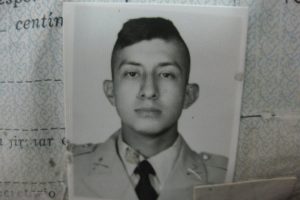 “It is impossible for me and family to return as we have been sentenced to death due to my participation in the various combats in the conflictive area,” he wrote in his asylum application.
“It is impossible for me and family to return as we have been sentenced to death due to my participation in the various combats in the conflictive area,” he wrote in his asylum application.
Immigration officials rejected his request, but Sosa sought asylum in Canada and became a citizen there. He eventually returned to the United States and became a U.S. citizen as well.
Recently, Sosa’s odyssey took an extraordinary turn. The self-proclaimed refugee stands accused of committing mass murder in uniform. Last month, Canada extradited him to Los Angeles to face trial on charges related to one of the worst war crimes in the recent history of the Americas. He had fled north after prosecutors charged him with lying on immigration forms to conceal his alleged role in the slaughter of more than 250 people in the village of Dos Erres in 1982.
Sosa, now a 54-year-old karate instructor, avoided detection for years because of oversights and lack of scrutiny by the Canadian and U.S. governments, according to court documents and interviews with Sosa, his relatives, officials and others. His trial will offer an up-close look at an accused leader of the commando unit implicated in the Dos Erres massacre: a landmark case for the Guatemalan and U.S. governments, which are connected by Guatemala’s violent past and present.
During years that many refugees struggled in the shadows, Sosa lived comfortably in North America. He bought a home, operated karate schools and traveled around the world.
“Imagine how different things can be for one person and another,” said Oscar Ramírez Castañeda, a survivor of Dos Erres.
Ramírez spent 14 years as an illegal immigrant living near Boston, working two full-time jobs to support four children. His mother and eight siblings died in the massacre, but the 3-year-old Ramírez was abducted by a commando and raised by the officer’s family. U.S. authorities recently granted asylum to Ramírez because he is living proof of the mass killing. He has agreed to testify against Sosa.
Sosa, who is jailed in Southern California, insists that he is innocent. He denies eyewitness accounts that he oversaw the killings of men, women and children and threw a grenade into a well piled with victims. He alleges a leftist conspiracy to frame him.
“It’s a game being played by the guerrillas,” Sosa said during a brief telephone interview last month, when he was still jailed in Calgary, Canada. “It’s all a conspiracy.” He added: “I am fighting still for my innocence.”
Sosa maintains that he was working on a civil affairs project in another village on the day of the massacre. His omissions on U.S. immigration forms were innocent lapses, he says, pointing out that he made no secret of his past when he sought asylum.
“Both governments knew of my Guatemala military membership and my action in war,” Sosa wrote in a letter provided to ProPublica by his brother, Hugo. “The United States knew perfectly well that I was a Guatemalan army officer.”
Documents and interviews suggest that U.S. officials overlooked or failed to detect records of Sosa’s military service at least twice when they reviewed his case. The story also raises questions about why Canada gave him refuge. Although there is no sign immigration officials knew of his alleged crimes, the Canadian government knew of serious accusations against the Guatemalan military: A Canadian diplomat participated in a U.S. investigation that found the army had committed the Dos Erres massacre.
Thirty years later, the case has become a test of Guatemala’s fight against lawlessness. Courts have convicted five soldiers in the past 14 months. They were the first guilty verdicts in one of the bloodiest massacres in the war, which ended in 1996 and resulted in more than 200,000 deaths. Prosecutors have also charged former dictator Efraín Ríos Montt in the Dos Erres case, alleging that he was the mastermind of the strategy behind the massacre.
Sosa is the highest-ranking soldier in the commando unit to face trial. Seven suspects, including the unit’s two top officers, remain at large in a nation where the security forces, often intertwined with mafias, retain great power. Guatemalan investigators believe some fugitives have been sheltered by the military and others move back and forth across the porous border with Belize.
U.S. authorities have arrested three other fugitive commandos who migrated to the United States. Gilberto Jordán, a former sergeant living in Florida, pleaded guilty to similar charges as those filed against Sosa and is now serving a 10-year sentence in federal prison. Another former sergeant arrested on immigration charges has agreed to testify against Sosa in the federal trial set for Nov. 27 in Riverside, Calif.
Martial Arts Expert
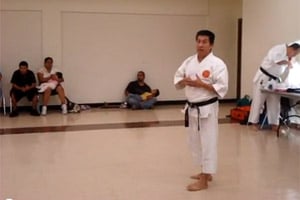
Born in Guatemala City in 1958, Sosa is the third of six children of a military family.Their late father was an internationally known karate master who oversaw martial arts training for the Guatemalan military, Sosa’s brother, Hugo, said in an interview. Hugo Sosa is a former Guatemalan army captain who now lives in Sacramento, Calif.
The short, sturdily built Jorge Sosa graduated from officer school as a sub-lieutenant in 1979. He held posts in various regions, underwent paratroop training and served as commander of 40 soldiers in an honor guard, according to army records and his account. He won a reputation for martial arts prowess. A former military comrade recalled seeing him take on visiting Taiwanese soldiers in karate matches.
“He was tremendously skilled,” said the former soldier, who requested anonymity for his safety. He described Sosa as “gentlemanly and friendly.”
Sosa underwent a grueling training program to join the Kaibil commandos, one of the toughest special forces outfits in Latin America. In July 1981, he became a self-defense instructor at the commando training school in the Petén region of Guatemala’s northern panhandle, according to military records and his account.
“This group of instructors and sub-instructors get their orders directly from the Director of the Center for Military Studies,” Sosa said in his letter provided to ProPublica. “Our mission was to provide counter-insurgency training to selected military personnel though a physical test. This course trained regular troops to become more combat effective against the guerrilla forces.”
The 30-year war with leftist guerrilla movements reached its peak in the early 1980s. The rebels assassinated a U.S. ambassador and committed other acts of terrorism, but the United Nations later attributed 93 percent of the human rights violations to the military. The U.N. concluded that the systematic campaign against indigenous groups constituted genocide.
The killing escalated in 1982 when Ríos Montt, a general, came to power after a coup. The commando school closed, and 20 instructors became a rapid reaction force for roving missions in a nationwide offensive against the guerrillas.
Sosa was one of four lieutenants who led this special patrol, though he was the lowest in seniority, according to Guatemalan court files and military records. The commander was Lt. Roberto Aníbal Rivera Martínez, who is still at large, according to the court files and records.
In October 1982, a guerrilla ambush resulted in the deaths of about 20 soldiers and the loss of their rifles. Intelligence later indicated the rifles could be in the vicinity of Dos Erres, a farming hamlet of 60 families deep in the jungle near the Mexican border. Army brass sent in the special commando patrol to recover the rifles and teach the villagers a lesson.
Disguised as guerrillas, the 20-man unit assaulted Dos Erres early in the morning of Dec. 7, backed by a support force of 40 uniformed commandos. The troops did not find the rifles or evidence of guerrilla activity. The raid disintegrated into a frenzy of rape, torture and murder that wiped out almost the entire population of the village, according to Guatemalan and U.S. court files.
The investigation began 14 years later, but it produced unique evidence. Breaking a code of silence, two soldiers became protected witnesses in the 1990s and testified about the slaughter. And prosecutors connected the unit to the massacre with DNA tests and other evidence proving that two boys from Dos Erres were abducted by commandos and grew up in military households.
Abducted Boys
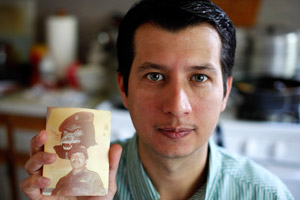
Lt. Oscar Ramírez Ramos abducted a 3-year-old, now known as Oscar Ramírez Castañeda. The lieutenant died in a traffic accident nine months later, but his family raised Oscar as one of their own.
Sgt. Santos López Alonzo abducted a 5-year-old, Ramiro Osorio Cristales, who unlike Oscar was old enough to remember the attack and his previous life. Alonzo raised the boy in harsh and abusive conditions, according to Guatemalan court files and interviews with Osorio and investigators. When the youth was 22, Guatemalan prosecutors found him, made him a protected witness and got him refugee status in Canada.
The Guatemalan and U.S. investigations identified Sosa as a commander of the assault on Dos Erres. Sosa played a lead role in a hideous scene in the center of the hamlet, according to the former soldiers. Commandos brought blindfolded villagers one by one to the village well, where they were questioned, struck on the head with a sledgehammer and dumped over the side. Soldiers also threw babies and children into the well, which overflowed with corpses by the end of the day.
Sosa not only gave orders, he killed people, according to witnesses. Former commando César Ibañez identified Sosa as one of seven lieutenants and sergeants who executed prisoners at the well, according to a transcript of his testimony in 2000.
Sosa and the others “hit them on the head with a sledgehammer and then threw fragmentation grenades at them so they died,” Ibañez testified. “The comment on the part of the officers was that no one had seen anything and that he who opened his mouth should remember that it would be closed forever.”
Sosa went into a rage when a villager cursed him from the well, said Favio Pinzón, a former cook for the squad. The wounded man managed to remove his blindfold and found himself lying atop a pile of living and dead bodies, Pinzón told prosecutors in 1996.
“He said to the officer [Sosa] Orantes ‘Kill me,'” Pinzón testified. “So the officer answered ‘Your mother,’ and the gentleman answered ‘Your mother, son of the great whore,’ so when the officer Orantes saw him he shot him with his rifle, but that was not enough and he threw a grenade into the well.”
(Pinzón and Ibañez repeated their stories during interviews this year for “Finding Oscar: Massacre, Memory and Justice in Guatemala,” an account of the massacre and Ramírez’ discovery of his true identity by ProPublica, This American Life and Fundación MEPI in Mexico.)
In the Florida case, the guilty plea of Jordán, one of the former sergeants implicated, included a similar account of a lieutenant firing and throwing a grenade into the well, according to a 2010 presentencing document in which the lieutenant is not named.
Sosa denies the allegations. He asserts that Pinzón and Ibañez were not part of his commando squad and that his squad did not take part in fighting.
“I was not in ‘Las Dos Erres,’” he wrote (the bold and underlines are from his letter). “We worked training selected troops. … We were not combative [sic] troops. ”
On the day of the massacre, Sosa says he was working in a civil affairs program in Melchor de Mencos, a town about a hundred miles away. He says participated in the program from October 1982 through March 1983.
“I met with the town’s Mayor, military commissioners, and teachers,” he wrote. “I went to the Capital City and had interviews with some Guatemalan Ministers and I was able to secure help for the citizens of Melchor de Mencos: 16 mobile libraries for the schools, educational materials (such as blackboards, chalk, books, pens, pencils, crayons), and sporting goods. … We also helped in the construction of the ‘Salsipuedes’ town school. I sponsored a basketball team named ‘Jimbas.'”
It’s unclear whether Sosa can produce witnesses or other evidence to support his version of events.
“I know there are witnesses, the question is finding them,” his brother said in a telephone interview.
The Sosas argue that the massacre may have really been committed by rebels, but that defense has been discredited by the confessions of military men in Guatemalan and U.S. courts.
Guatemalan prosecutor Sara Romero, who has spent 16 years investigating the case, dismissed the alibi.
“It’s a lie,” she said in a telephone interview. “We have witnesses who saw him throw a grenade in the well. He was one of the chiefs of the patrol. He was there.”
Sosa’s trial will feature unprecedented testimony from a new witness: Alonzo, the ex-sergeant who raised the 5-year-old boy from Dos Erres. In 2010, federal agents in Texas arrested Alonzo on charges of illegal re-entry after deportation. He was sentenced to time served and agreed to testify for the prosecution. He is now being held as a material witness in Southern California.
Documents in the Canadian extradition file indicate that Alonzo will identify Sosa as a commanding officer and describe Sosa’s involvement in the massacre. The boy Alonzo abducted, Osorio, is now 35. In a telephone interview from Canada, Osorio said he is glad the former sergeant will testify.
“Everyone has to pay for what they did,” Osorio said. “The psychology of these soldiers is really ugly. I think these elite military men in Dos Erres were people trained to destroy, to kill everything in front of them. They were a machine.”
Assassination Attempts
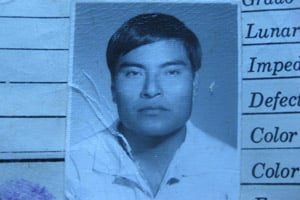
Sosa remained in the Army for two and a half years after the massacre, according to military records.
In 1984, he took an assignment training cadets at the military academy in Guatemala City. In July of that year, he says he spent a week on vacation in Florida with other officers, entering with official military passports. He cites this visit as one reason that the U.S. government should have known about his army service.
A year later, however, his career came to an abrupt end. The reasons for his departure to California in early May 1985 are murky.
Sosa provided the Canadian courts and ProPublica with pages from his 1985 asylum application that say he did his combat missions on “orders from the high echelons of the military” and that he had been “sentenced to death.”
“He had caused so many casualties for the guerrillas that they wanted to kill him,” his brother Hugo said in the interview.
But Sosa and his relatives now make an assertion that is not in the pages of the U.S. asylum application: He had grown disenchanted with the war and was fleeing from the military as well.
“I escaped from Guatemala on May 10, 1985 because I was not happy … with the Guatemala army in the way they were dealing with the war,” Sosa wrote recently in a letter to Amnesty International, obtained by ProPublica. “And also for the constant threats and attacks from the Guerrilla forces toward my family and myself.”
Sosa survived three assassination attempts, according to his brother. Fellow soldiers tried to kill the lieutenant and his father because of internal feuds, his brother said.
“He left because there were threats against the family,” Hugo Sosa said. “The perpetrators were both the guerrilla forces and the army. Lamentably, there were envies in the armed forces. Many did not like us because of envy. We knew some of the attacks were done by G-2, which is military intelligence. … He had many achievements, many medals. He had obtained good posts. This created envy.”
In one attack in 1985, Hugo Sosa said, intelligence officers with automatic weapons ambushed Jorge Sosa and his father while they drove in the Guatemalan capital. The Sosas fended off the assailants by drawing their own guns, according to the brother’s account.
Sosa’s former military comrade said he had heard that intelligence officers wanted to kill Sosa. Rather than envy, however, he cited a different motive: He said military intelligence targeted Sosa because of a dispute having to do with his personal life.
Sosa’s brother said he knew nothing about that allegation. Sosa’s military service record says he was discharged as a deserter on May 20, 1985.
Welcomed by Canada
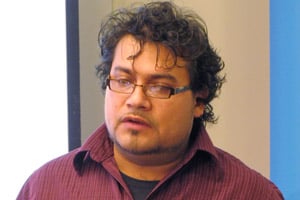
Sosa arrived in California with his wife and a young daughter, according to his account and U.S. records. His parents and a sister also came to San Francisco. The new arrivals lived with Hugo Sosa, who had moved there earlier after marrying a U.S. citizen.
The Sosas were part of an exodus of Central Americans fleeing wars. Military men were a minority compared to refugees from persecution by the Guatemalan armed forces, which had the longtime backing of the U.S. government, though ex-soldiers won asylum as well.
Three months after Sosa applied for asylum, the State Department’s asylum office sent an advisory opinion to the U.S. Immigration and Naturalization Service finding that he had not proved a well-founded fear of persecution, according to a State Department letter in August 1985. The INS informed him of its decision to reject his asylum request in a letter dated Sept. 19, 1985, records show. The INS began deportation proceedings, documents show.
Sosa remained in San Francisco for three years while he and his family sought political asylum at the Canadian consulate, documents show. Canada had a more generous asylum policy than the United States at the time.
Sosa’s background invited scrutiny. He says he described his military service in his asylum request to Canada and that U.S. officials communicated with Canadian counterparts about his case. If so, that means he made it clear he was an officer and combat veteran in an elite unit of an army that was internationally notorious for massacres, torture and corruption.
In addition, the Canadian government had specific knowledge of the Dos Erres massacre. Tips about the incident had reached the U.S. embassy from Guatemalan government sources at a time when diplomats were under pressure to look into reports of military massacres across Guatemala, according to State Department cables declassified by the National Security Archive at George Washington University.
As a result, three U.S. embassy officials traveled from the capital to northern Guatemala on Dec. 30, 1982, three weeks after the massacre, and conducted an inquiry. They were accompanied by the first secretary of the Canadian embassy, according to the cables.
The U.S. officials concluded that the Guatemalan army had wiped out the village, the cable says. The Canadian diplomat, meanwhile, “was unsure of what to conclude from what he had seen and specifically was reluctant to speculate as to who might have destroyed Dos R’s”, the cable says.
Despite the Canadian’s hesitant response, the cable shows that Canadian diplomats knew about serious allegations against the Guatemalan military — and the U.S. view that Dos Erres was the work of soldiers. Assuming Sosa detailed his Army service in his asylum request, Canadian immigration officials could have seen that he served as an officer in northern Guatemala and other violent areas during years when the army was accused of wholesale abuses.
Sosa and his brother say Canada gave him political asylum. But Canadian justice and immigration officials, citing privacy restrictions, would not discuss the type of status he received and whether Sosa’s military history was a consideration. Regardless, Sosa and his family moved to Canada as legal immigrants in 1988 and he became a citizen in 1992, according to documents and his account.
Francisco Rico Martínez, a longtime advocate of Central American refugees in Canada, said Canada has accepted other former Central American soldiers with questionable pasts.
“The acceptance rate was very high back then,” Rico said. “There were a lot of deficiencies in the system that have been corrected. I am not surprised he entered.”
The Sosas moved to Lethbridge in the province of Alberta. The father and son set up a karate school. But Sosa soon divorced his wife, with whom he had two children, and went to New York to teach karate.
“He came to the United States because he divorced,” his brother said. “He came to improve himself. Business is stronger here than in Canada.”
In the 1990s, Sosa met a Guatemalan-born woman in New York, a U.S. citizen who was the mother of one of his karate students, according to public records and her account. They began a relationship. Sosa settled in New York and the two were married. She now believes he manipulated her in order to obtain his immigration papers.
“He fooled me,” said the woman, who asked to be identified by only her first name, Sonia, to protect her family’s safety. “He is not honest. He married me to get residency. In his head, I imagine he wanted to achieve that. He is a very strange person.”
Sosa made no secret of his military past, though he never mentioned the Dos Erres massacre, Sonia said. He told her he had left Guatemala fleeing the guerillas and the army, according to her account.
“I never understood why the military was persecuting him,” she said.
Sonia believes that Sosa’s wartime commando experience had a damaging psychological effect on him.
“Being a Kaibil is a very strong thing,” she said. “You have to be very centered for it not to affect you. He had like a double personality.”
Missed Clues in U.S.
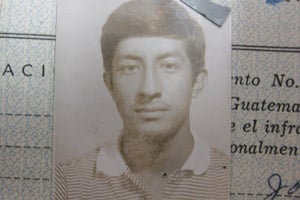
Thanks to his marriage to Sonia, Sosa sought a green card.
U.S. prosecutors charge that he lied on his application for permanent residency and during an interview with a U.S. immigration officer on Nov. 30, 1998, according to the Canadian extradition file. When asked if he had done foreign military service, Sosa answered “none,” according to the file.
Thirteen years earlier, however, he had described his military experience as the basis of his failed U.S. asylum request in California. In 1998, U.S. immigration officials already had an existing file number for him because of the earlier asylum bid, documents show.
Why didn’t the officials in New York spot the contradiction with the previous California documents?
The answer involves a shift by the INS from paper files to digital recordkeeping in the early 1990s, according to two DHS officials. The INS officers who reviewed Sosa’s case would have seen in his file that he had applied for political asylum in the past, the officials said. But to see details such as his past military service, they would have had to request the 1985 file from paper archives, where pre-1990 cases are kept, a DHS official said.
“When someone files for a green card, the individual goes through a thorough background check,” the DHS officials said. “But they routinely don’t go into that level of scrutiny as far as requesting a cold case file. They are relying on background checks, FBI fingerprints and so on.”
Sosa’s omission slipped by. He received his green card in 1998. He left his wife and moved to California, where he settled in Riverside County east of Los Angeles, according to his brother, ex-wife and public records.
In 2000, as a fledgling democracy took hold in Guatemala, prosecutors there charged Sosa and the rest of the commando squad for the Dos Erres massacre. The power of the army and a flurry of appeals by defense lawyers kept the case in limbo, impeding arrests for a decade. The Guatemalan media reported on the case and Sosa was aware of the charges, according to his brother.
Over the decade, Sosa did well. He worked as an office manager but focused increasingly on teaching karate, setting up four schools in Southern California, according to his brother. Sosa gave frequent martial arts seminars overseas, traveling at least once a year to countries including Argentina, Brazil, Colombia, Costa Rica, Japan and Mexico, according to his family.
Sosa divorced Sonia in 2006 and remarried in California, according to his brother and public records. In 2007, he applied for U.S. citizenship in San Bernardino, Calif., court records show.
Federal prosecutors accuse him of committing three crimes during the application process and an interview with an immigration officer on March 18, 2008.
On his citizenship form, Sosa responded negatively to a question asking if he had committed a crime for which he had not been arrested, when in fact, an indictment alleges, “he had committed crimes including but not limited to murder at Dos Erres.” Asked about past membership in organizations, he failed to mention the Guatemalan army, the indictment says. And it says he denied giving false information in the past, despite having concealed his military service on his green card application in 1998.
Sosa defends himself by asserting that officials should have known about his military service from their records. He cites his response to question No. 27 on the citizenship application that mentions his asylum request, which had described his combat experience.
“The first time I and my family entered into the United States was on May 10, 1985,” Sosa wrote, according to a page from the citizenship form. “I submitted a political asylum application in San Francisco, California. It was at a later time that I submitted my case to the Canadian embassy.”
Sosa’s written answer further explained that U.S. officials rejected his asylum request and ordered his deportation, but canceled the order after learning that Canada accepted him as an immigrant in 1988. The answer to the question does not specifically cite his military service.
If U.S. officers had asked Sosa about his reasons for requesting political asylum in the United States and Canada, it seems logical that the questions might have elicited disclosure of his military past.
By 2008 the prosecution of the Dos Erres case had received news coverage in Guatemala and beyond. Sosa said in his letter that he also disclosed his army record when he testified on behalf of a fellow Guatemalan in a San Francisco immigration court in 1986 and 1987.
Immigrants routinely run into problems with the system because of inaccuracies or omissions on forms and in interviews. But in 2008 as in 1998, Sosa apparently did not raise enough interest to warrant retrieving the file on the rejected asylum request or even asking him about it. Moreover, officials point out, he had gone through a previous round of screening to obtain the green card.
The U.S. government granted citizenship to Sosa in September 2008.
The accused war criminal had avoided detection once again.
Three months later, though, an investigator at the Department of Homeland Security opened an inquiry into Sosa related to Dos Erres, according to U.S. court documents.
The Inter-American Court of Human Rights had recently ruled against Guatemala for its failure to pursue the massacre prosecution. The court, which is based in Costa Rica and is a regional arbiter for major human rights disputes, published the list of suspects. The war crimes unit of Homeland Security took an interest in the list and identified Sosa and three other fugitives who had come to the United States as immigrants.
After a lengthy investigation in Florida, Texas, California and elsewhere, in May 2010 federal agents searched Sosa’s home in Moreno Valley east of Los Angeles. Sosa left for Mexico soon afterward. In January of last year, he traveled from Mexico to Canada. Police tracked him down in Lethbridge, where his parents still lived.
Because Canadian courts have jurisdiction over crimes against humanity, Canada could have prosecuted Sosa for the massacre. Authorities also could have extradited him to Guatemala to stand trial.
Instead, Canada chose to extradite him to the United States to be tried for the immigration crimes, which carry a maximum sentence of 10 years. Canadian officials declined to comment on that decision.
Guatemalan prosecutor Romero said she was disappointed. She said a Guatemalan extradition request to Canada went unheeded.
“The U.S. is judging him for a minor offense that is immigration,” she said. “It postpones our case.”
U.S. federal officials say the extradition is part of a crackdown on human rights abusers who seek refuge here. They say it also bolsters the Guatemalan prosecutions. Some evidence used to convict the commandos in Guatemala last year came from U.S. investigations. If convicted, Sosa faces eventual loss of his citizenship and deportation to Guatemala.
“I think it’s a very significant case,” said Claude Arnold, the special agent in charge of Immigration and Customs Enforcement in Los Angeles and a former chief of the war crimes unit. “It’s always good to get someone in a leadership role. … Although it’s an immigration case, we gather all the evidence as if we were prosecuting him for a war crime. Our goal is to help our international partners.”
Politics and Punishment
The Sosas say the prosecution is politically motivated. They blame Guatemalan human rights activists looking to settle old scores.
“The famous human rights people, since they haven’t succeeded in accusing the masterminds, they look for someone to pay,” said Hugo Sosa. “They are people of the guerrillas. The U.S. government doesn’t know what happened in the war. They base what they do on what the ex-guerrillas say, the ones who are now involved in human rights.”
Sosa claims he is protected by an amnesty law in Guatemala for participants in the civil war and that the charges against him in his homeland have been annulled. He says his record his clean.
“I desperately need people to know that I have NOT committed a crime nor do I have a criminal mind,” he said in his letter. “I have lived in North America for around 25 years and have absolutely no criminal record. I have been dedicated to helping immigrants that come to North America. In our Martial Arts traditional teachings, we teach respect and support for our neighbours; peace and love between all human beings; and to avoid any fights or confrontations without sense.”
Guatemalan prosecutors point out that the amnesty law has a specific exception for crimes against humanity that has enabled the convictions in the Dos Erres case. Prosecutor Romero said the charges against Sosa have not been annulled. Sosa would be arrested and tried if he set foot in Guatemala, Romero said.
Osorio, the survivor abducted from Dos Erres as a boy, was startled last year when police informed him that Sosa had been caught in Canada and was a fellow Canadian citizen. If the charges against Sosa are true, he was a commander of the troops who stormed into Osorio’s home and slaughtered his family.
Osorio has watched the case with disbelief. He finds it disturbing that Sosa might have manipulated the system in two countries and evaded capture for years.
“It is an injustice,” Osorio said. “When I came to Canada as a refugee, I was asked if I had participated in any massacres. And I was a survivor of a massacre. This man had three nationalities. He came and went as he pleased. The state gives people like him the power to kill. They abuse power. That sense of arrogance stays with them. But then, when the hour comes for them to pay for what they did, they deny their crimes.”
This article was first published in ProPublica.
Photo captions:
Jorge Vinicio Sosa Orantes, seen here as a young soldier, denies any role in the slaughter of 250 villagers at Dos Erres in 1982.
Jorge Vinicio Sosa Orantes (YouTube)
Oscar Ramírez Castañeda holds a photo of Lt. Oscar Ramírez Ramos who abducted him from Dos Erres after the massacre. (Matthew Healey for ProPublica)
Sgt. Santos López Alonzo abducted a 5-year-old boy from Dos Erres. In 2010, federal agents in Texas arrested Alonzo on immigration charges. He is expected to testify against Sosa.
Ramiro Osorio Cristales, who was abducted by Alonzo. Guatemalan prosecutors found Osorio when he was 22, made him a protected witness and helped him move to Canada. (Bill Graveland, The Canadian Press/AP Photo)
Sosa as a young man. U.S. prosecutors say he hid his military background and crimes “including but not limited to murder at Dos Erres” when he applied for U.S. citizenship.
ProPublica is an independent, non-profit newsroom that produces investigative journalism in the public interest. Our work focuses exclusively on truly important stories, stories with “moral force.” ProPublica is led by Paul Steiger, the former managing editor of The Wall Street Journal. Stephen Engelberg, a former managing editor of The Oregonian, Portland, Oregon and former investigative editor of The New York Times, is ProPublica’s managing editor. Richard Tofel, the former assistant publisher of The Wall Street Journal, is general manager.

